With government leaders using their influence to disinform, employing armies of trolls that take advantage of the internet’s reach to stay in power through revisionism and fake news, learning from history has never been more important. As George Santayana said, “Those who cannot remember the past are condemned to repeat it.”

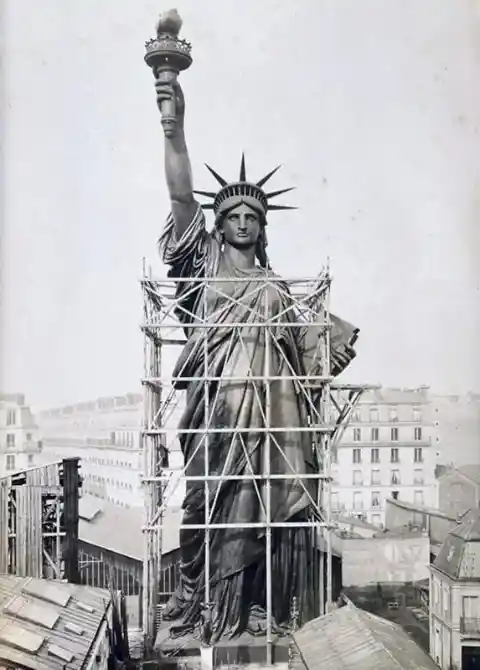
Thanks to scholars and historians who plow through the vast snowfields of history, people still have what it takes to learn and relearn the past. Buried deep are rare photographs, glimmering shards of rich historical significance. Images that stare back at its viewer and help us understand how we came to be and what kind of preparations can be made for a better future.
Queen Elizabeth’s World War II Adventures
This photograph was taken almost eighty years ago. It is a stark contrast to the queen’s persona as we know it today, perched in her castle, with all the luxury and comfort afforded exclusively to members of the royal family. This was from a time when she served in the Auxiliary Territorial Service (ATS).
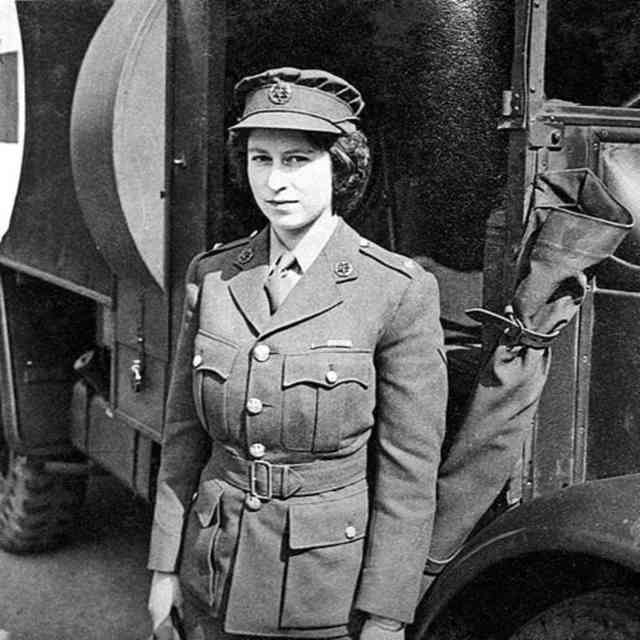
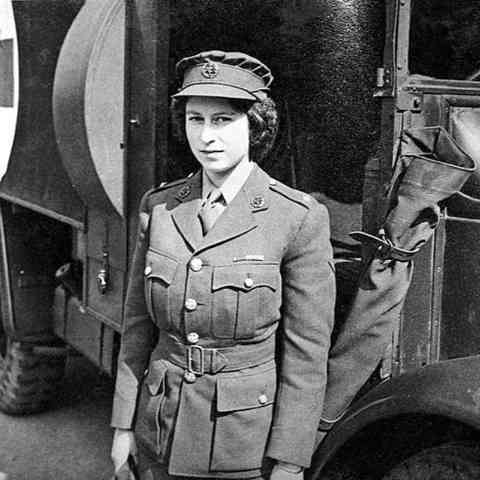
During wartime, the young princess drove military vehicles and even repaired some of those that broke down, having been trained as a mechanic. Her presence at this time of trouble was an inspiration to the public, whom she spoke to through the radio to offer words of encouragement.
Recrossing Abbey Road
Abbey Road is the Beatles’ last recorded album and, as many say, their finest. Many pictures like this are posted on the Internet of people trying to imitate the legendary band’s popular crossing down the zebra line, walking casually in step, for their record’s official cover.
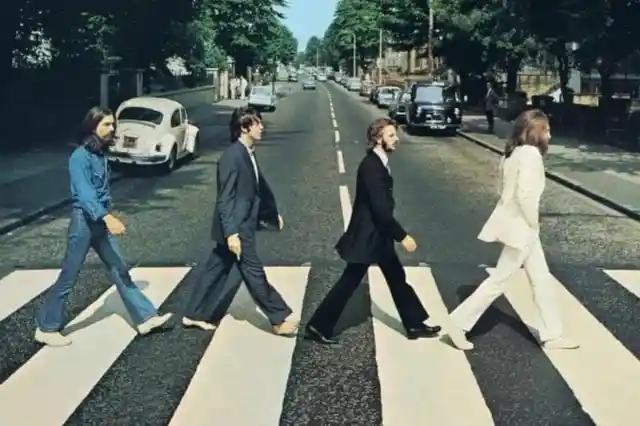
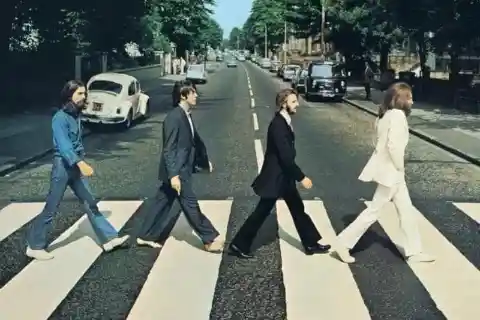
But this seemingly nonchalant walk was actually done over and over again for ten minutes until the group finally agreed on a take they liked. Here’s one of those shots that wasn’t picked for the cover, a snap taken along with the dozens of others with minuscule differences that didn’t make it to general circulation.
The End of the Vietnam War
The Vietnam War started in 1955 with the North Vietnamese government wanting to reunite the French-ruled, US-backed South into their communist regime. Here’s a symbolic photograph of Americans (civilian and military) fleeing in urgency prior to the Fall of Saigon.
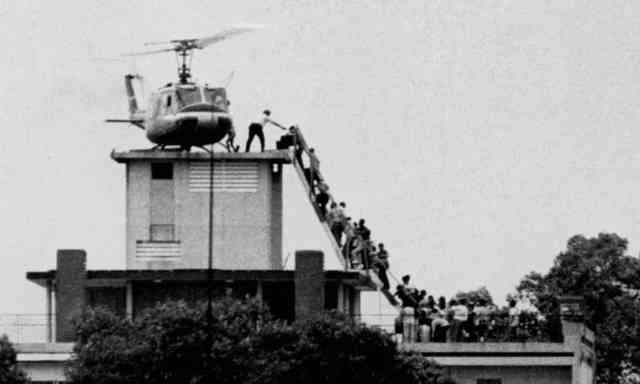
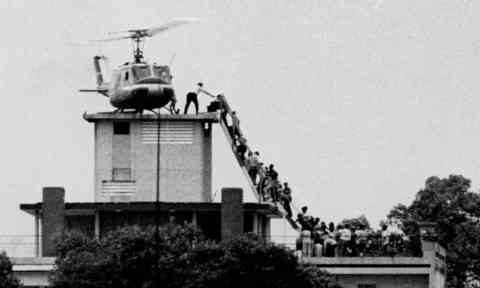
Included in its evacuation were thousands of South Vietnamese who worked with the Americans. This picture has long been tucked away as a humbling reminder of the US military’s ordeal and defeat in Indochina.
Celebrating Germany’s Defeat, World War II
Members of the Allied Forces could not hold back their emotions, carousing in celebration of Germany’s defeat in World War II, a conflict that lasted for six years and a day. This was their ultimate moment of victory, standing outside the second-floor window of the Reich Chancellery.
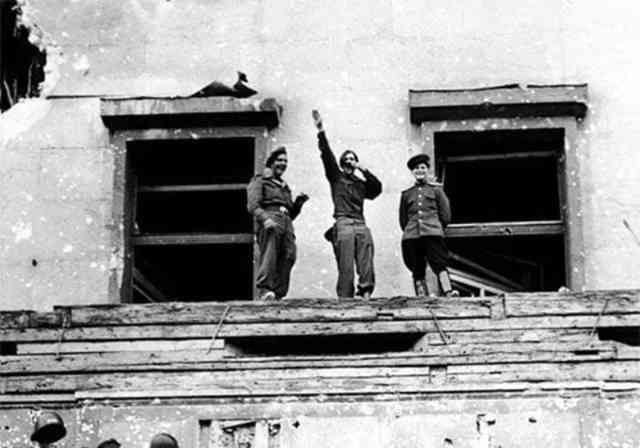
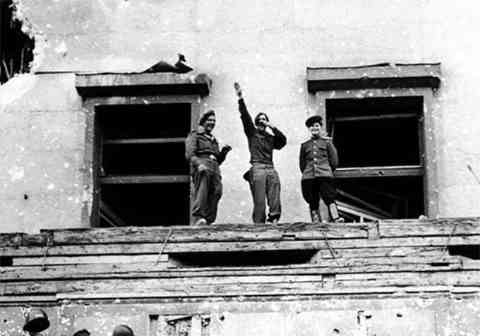
This building served as a hideout for the Fuhrer during wartime, where he occasionally met with his generals to plan out the direction of the war. Below the New Chancellery were connected bunkers to keep him safe during air raids. Hitler reportedly took his own life there in its underground space in 1945.
JFK Visiting Cape Canaveral
Almost sixty years ago, then-President John F. Kennedy visited Cape Canaveral, the locus of his lunar project development, which he planned to complete by the end of the decade, along with NASA’s top dogs, and former senator George Smathers.
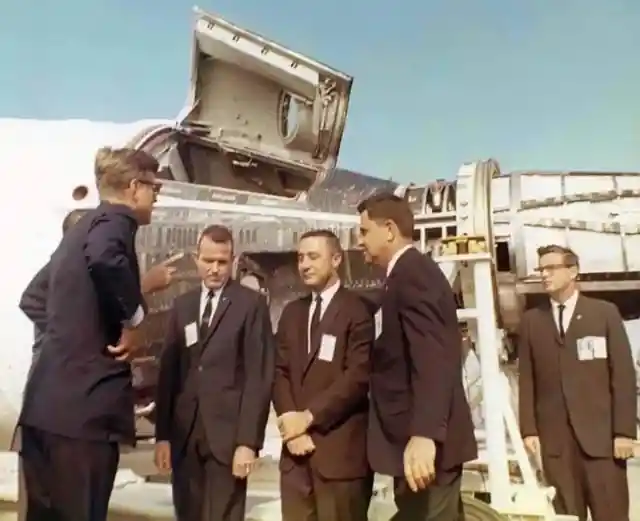
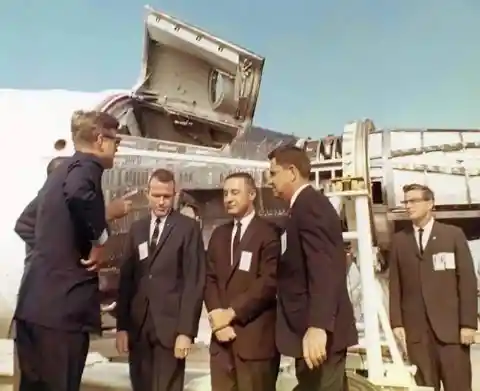
During the tour, NASA officials briefed him on the updates of the rockets, explaining the functions of its many parts through a tour of its models, ending in an inspection of the Saturn V’s assembly line. This picture shows how important the Lunar mission was to JFK, who was assassinated a few days after the snap was taken.
Nuclear Test Dummy
This mannequin became the subject of a photograph taken at the Nevada Test Site in 1955. Many mannequins like this were set at different distances across the field from the detonation point to give scientists a better idea of the weapon’s strength and reach. This particular dummy was placed 7,000 feet away from the bomb.
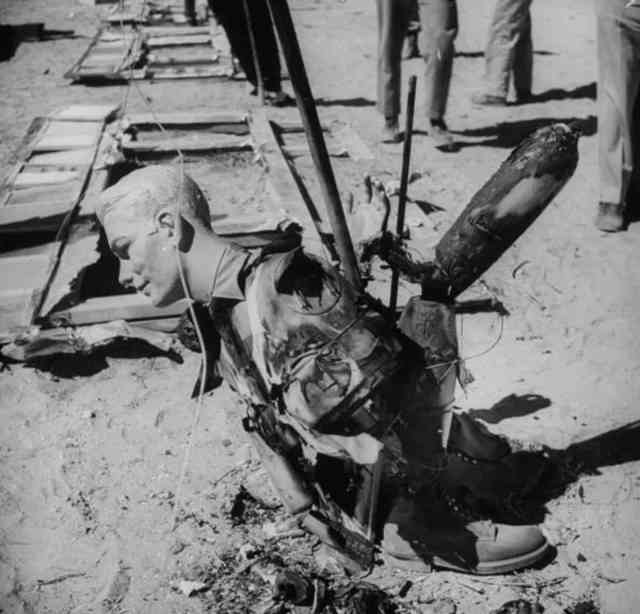
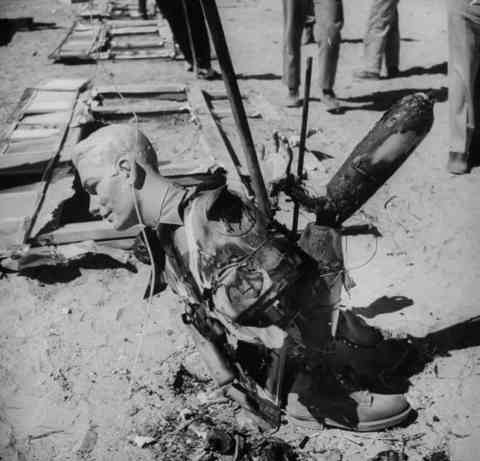
This was a scary time during the Cold War when the US and the Soviet Union were eagerly trying to outperform each other to lead the nuclear arms race. There are still over 12,000 warheads in the world today, meaning that the end of the world (at least for humans) is still on the table.
One of the Last Photos of Nicholas II and Daughter Anastasia
Recovered by historians is one of the last photographs taken of Nicholas II, Russia’s last emperor, who holds his pipe in jest for his long “lost” daughter Anastasia. This was taken during their last days, before the death of the entire family after the October Revolution.
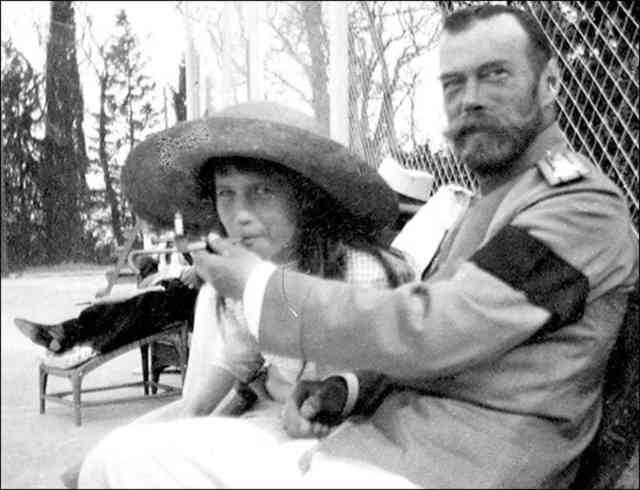
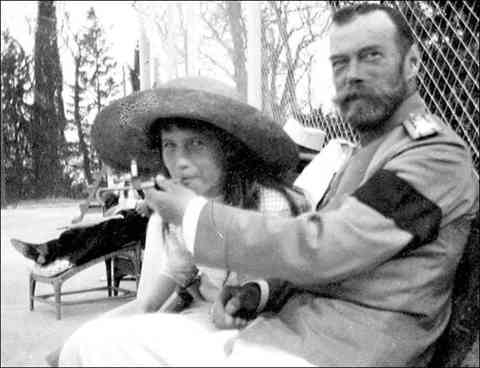
She had been rumored to have escaped her family’s execution in 1918, living incognito. Her purported life story was the focus of a Disney film named after her in 1997. Her death was conclusively proven in 2007 by DNA testing after her body was found in a former mining area’s bonfire site.
Lewis Powell Imprisoned
Confederate soldier Lewis Powell thought he could escape the consequences of his actions by posing as a canal digger. But three days after his attempted assassination of former senator William Seward, made as part of a conspiracy to assassinate Lincoln, Powell was identified and imprisoned in an anchored ship, the USS Saugus, where this old photo was taken.
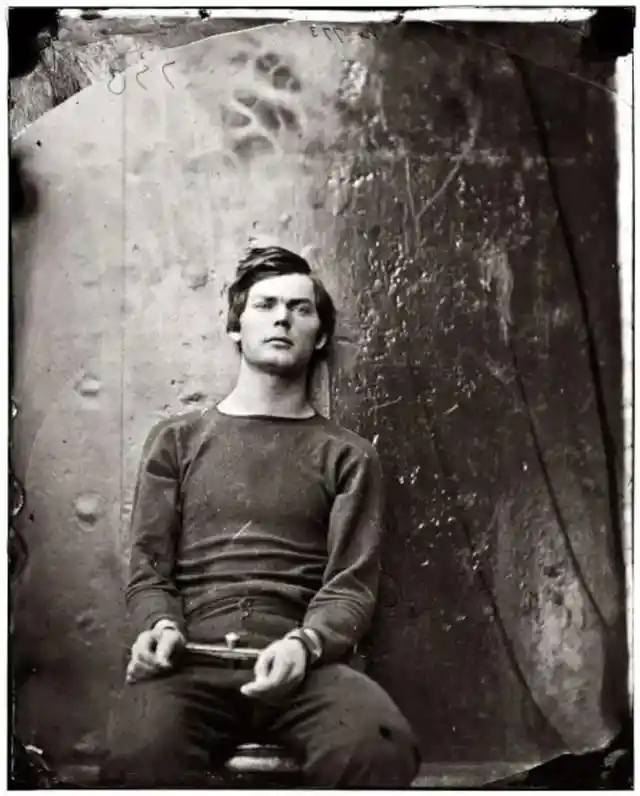
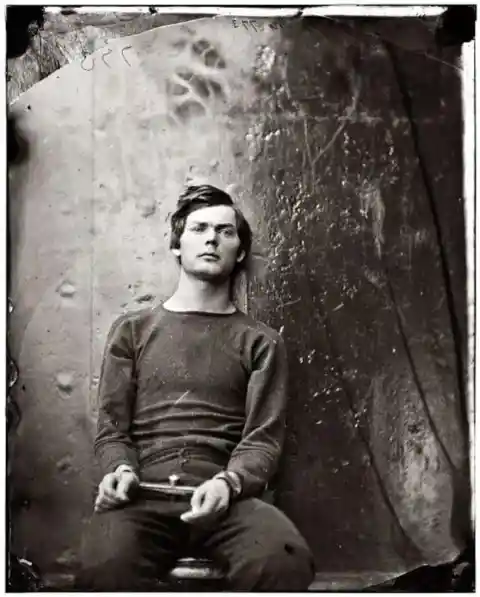
His original plan was to kidnap the President, but this task was undertaken by John Wilkes Booth instead, his recruiter, who changed his assignment in the Lincoln Plot. Powell was again identified by Seward’s son, sealing his fate.
Keeping the Mona Lisa Painting Safe
Adolf Hitler’s reputation as a ruthless and violent leader may have preceded him during World War II, but the German dictator also coveted works of art. He had amassed hundreds of paintings during the German invasions of Europe and planned to establish a museum for his collection of the finest art in the world.
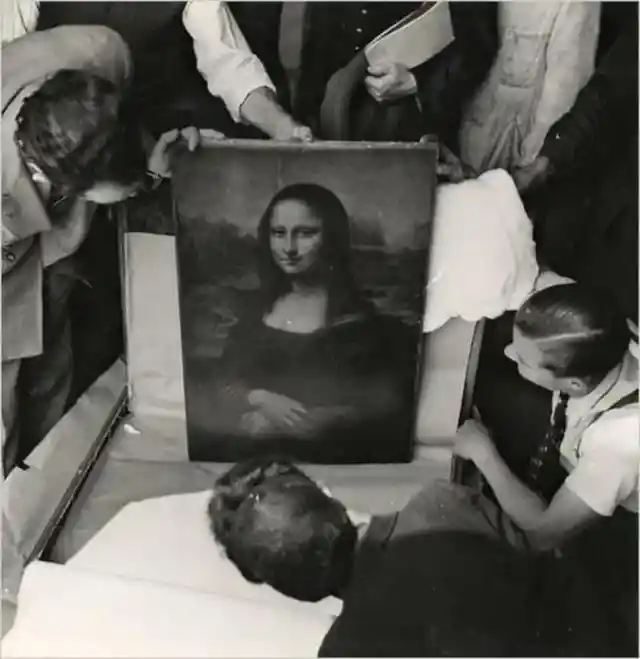

This photograph of the Mona Lisa reminds us of the days following the end of WWII, when, after being constantly moved from place to place for safety, the painting was finally returned to Paris, where it belonged.
Construction of Statue of Liberty
This photograph harkens back to the early days of the construction of the Statue of Liberty, a neoclassical sculpture designed by Frédéric Auguste Bartholdi. This shot was taken before the colossal structure was disassembled and shipped out to New York in 1885.
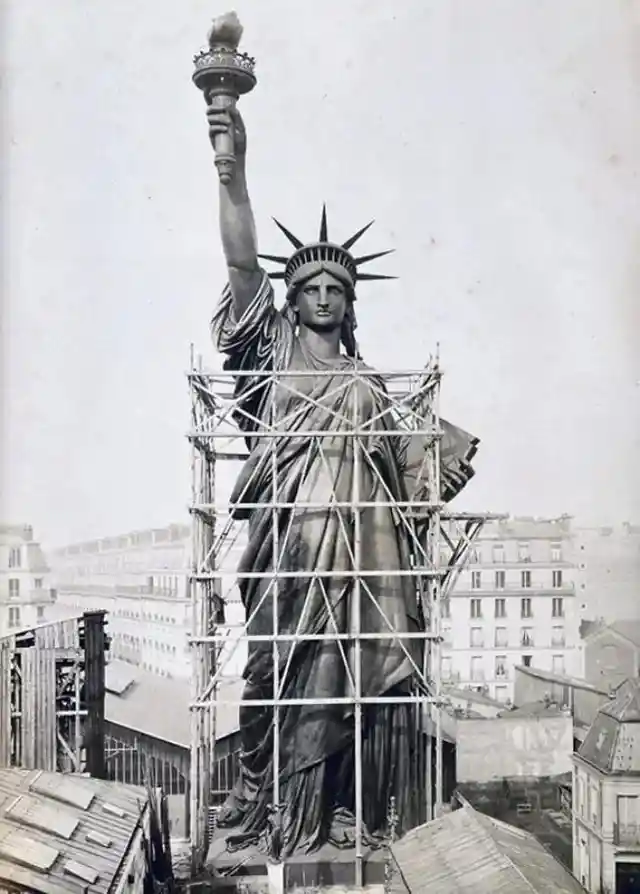
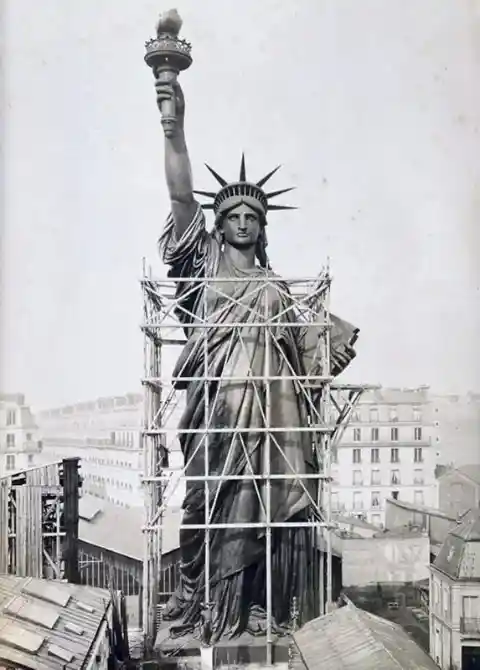
This symbol of liberty was a gift by France to the United States. The French government paid for the construction of the statue and its transportation, while the Americans covered the pedestal’s construction. The statue is surrounded by scaffoldings, perhaps a symbol that our rights and democracy should always be considered works in progress.
Pablo Escobar Tours Outside the White House
Just outside the gates to the White House, Pablo Escobar poses for the camera with his son, no different from any of the hundreds of tourists the workplace of the US president draws on a daily basis. It was taken in 1980, at a time when Escobar had gained international notoriety as the Medellin Cartel head honcho.
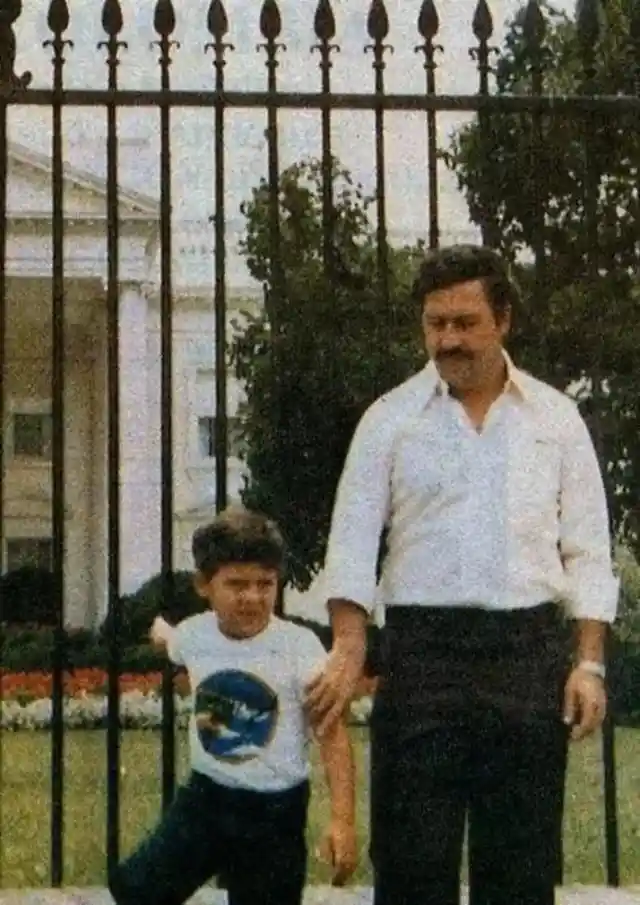
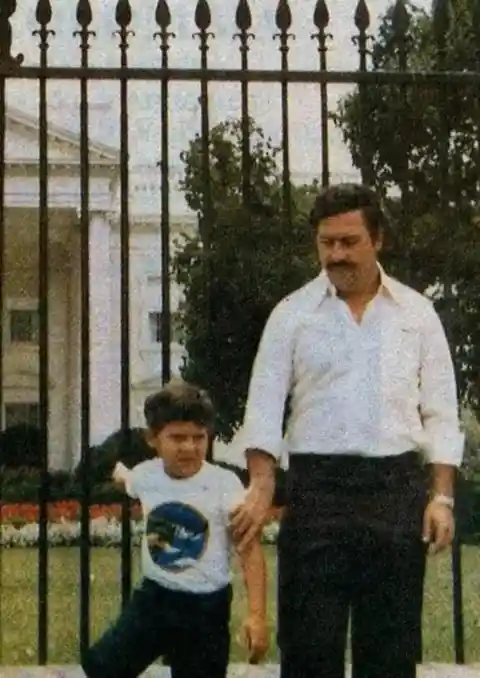
While the US government had DEA agents scouring every corner of Colombia in an attempt to follow his every move, history’s wealthiest criminal—valued approximately at $30 billion at the time—slipped under their noses amongst other day-tripping tourists.
A Fatal Plunge
After leaving the Women’s Army Corps, Evelyn McHale applied for a job and was hired as a bookkeeper in New York’s Kitab Engraving Company. She met a man there who fell in love with her and proposed. Who knows what the rest of her life would have looked like—but why?
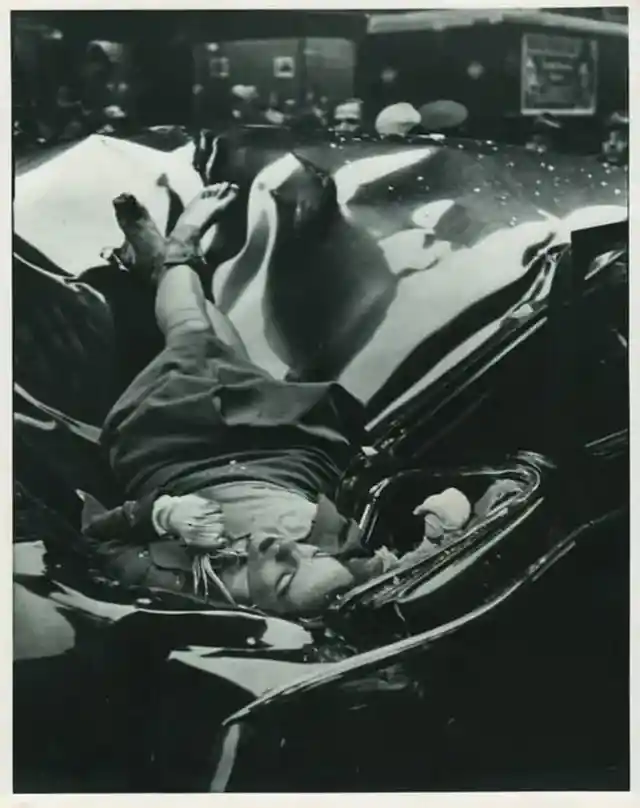
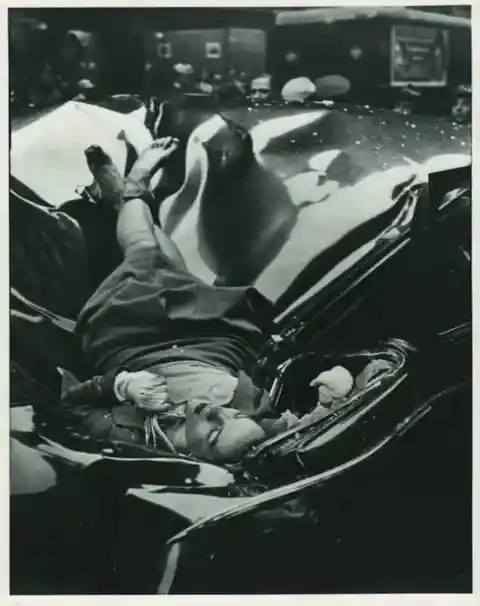
Because one day, Evelyn McHale decided to just jump off the Empire State building for reasons no one could have guessed. This picture was taken just four minutes after her fatal plunge from the sky, 82 floors up, capturing her beautiful still body against the burnished black crumpled roof of a vehicle.
A Family Portrait on the Moon
Photographed here isn’t mere litter but an item deliberately left by astronaut Charles Duke on the surface of the moon. He left this family portrait with signatures and fingerprints on the back as proof of his lunar visit via Apollo 16 in 1972.
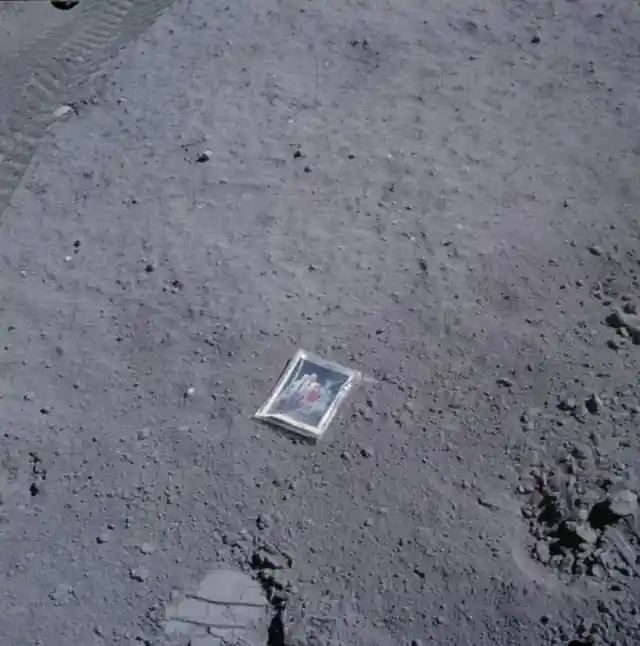
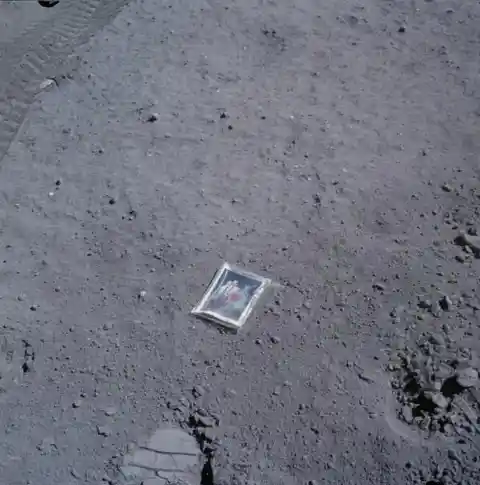
The picture was left there and remains there today, along with the spaceman’s footprints after he stepped out of the spacecraft Casper for a deep Extravehicular Activity. Because there is no wind on the moon, his footsteps and picture will likely remain there for a very long time.
Student-Led Protests in Tiananmen Square, 1989
Protesters, mostly students, are pictured here converging against China’s military, preventing their access to Tiananmen Square in 1989. There was a growing democratic movement at the time. The death of the Chinese Communist Party’s general secretary HU Yaobang was followed by economic reforms that severely disadvantaged many, prompting people to protest on the streets.
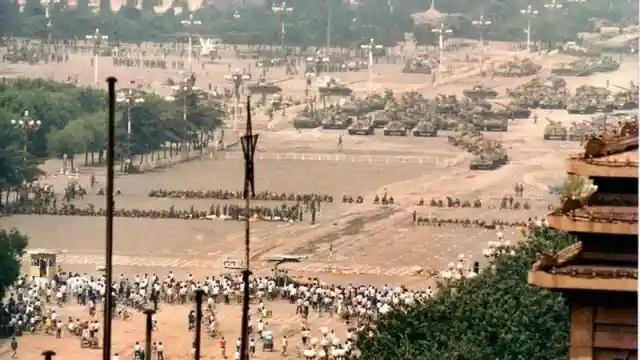
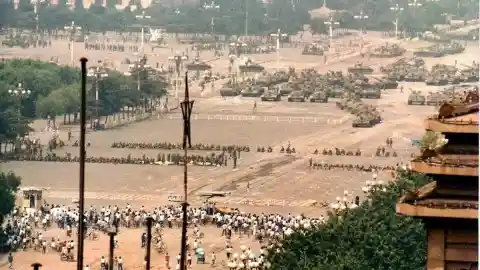
The protests lasted almost three weeks—until the military enforced a hardline stance and decided to open fire at thousands of protesters, earning the united ire of the international community, many of which imposed arms embargoes against China.
The Tramp Meets Helen Keller
When Charlie Chaplin met American author Helen Keller for the first time, at Chaplin Studios in 1918, for the shooting of his movie Sunnyside, he really wanted to know if Keller liked his work. She described him as shy and modest, and they became good friends, spending most of the day away from prying eyes.
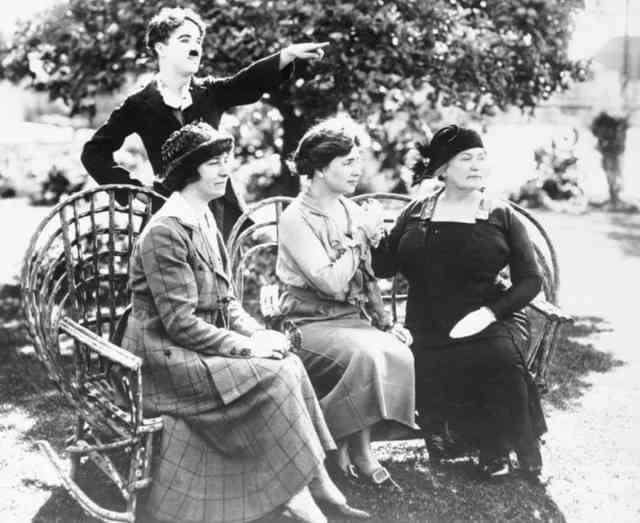
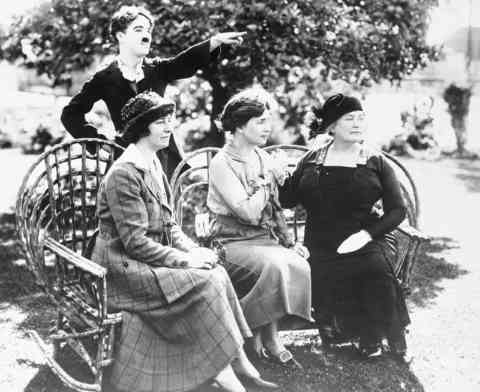
They dined together and watched his films with Keller’s companion, Anne Sullivan, describing the show to her through sign language on Keller’s arms as Sullivan was both blind and deaf.
Intensive Labor, Construction of Statue of Liberty
This anachronistic photograph shows French laborers hard at work, crafting the many parts of the Statue of Liberty into shape, piece by piece. The statue would be the government’s way of showing their gratitude to the United States, commemorating their friendship following the American Revolution.
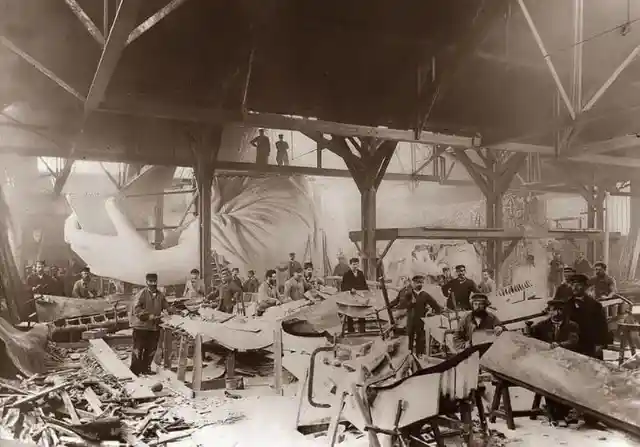
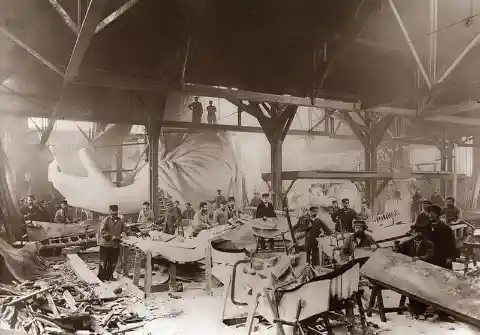
It took them nine years to complete the structure. This included raising funds from the affluent at first, then from the general public. Another four months were spent fabricating the huge pedestal after its arrival in the US.
Life in Afghanistan as a Modern Democracy
For years, Afghanistan has been ravaged by conflict, invasion, occupation, and extremism. Unfortunately, it’s now one of the poorest nations in the world, and it doesn’t seem likely that its problems are going to let up soon, especially as the country is under the control of the Taliban and other warring factions.
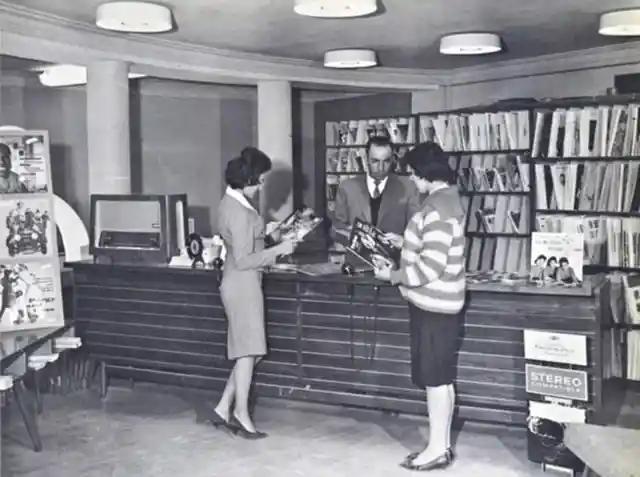
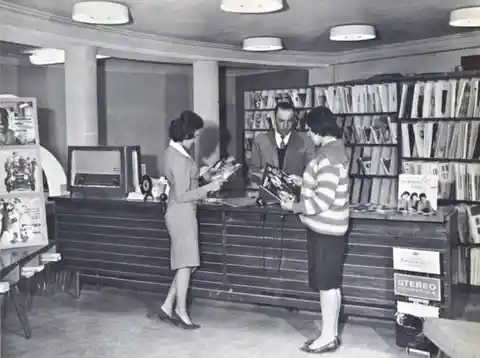
But people should never forget that Afghanistan used to be a shining beacon of democracy. Before it regressed to its current state, under its 1964 constitution, Afghan women were granted equal rights. They were allowed to study in universities, vote, and even run for political office.
Massacre in Beijing
The Chinese government did not soften its stance against the growing number of protesters around Tiananmen Square in Beijing in 1989, who demanded socio-economic change and democracy. Their arguments were met with an iron fist when hundreds of foot soldiers armed to the teeth, backed up by tanks and other armed vehicles, stared the protesters down.
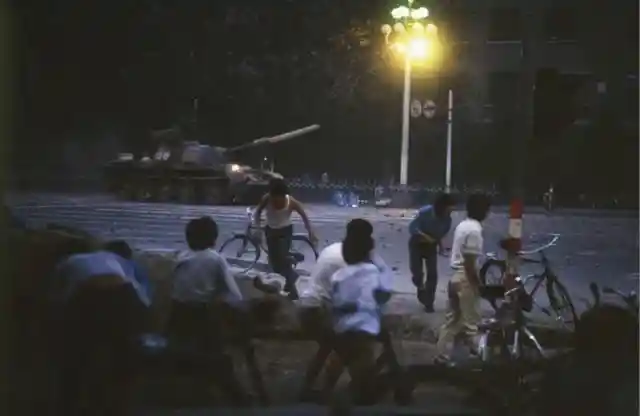
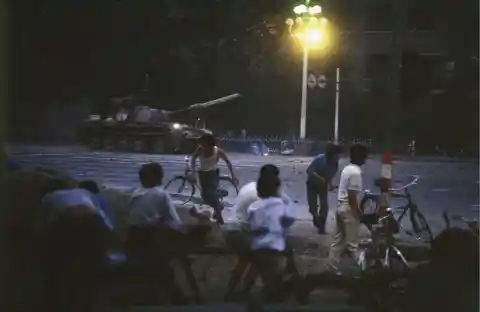
This is a photo taken on that violent day when the kill order was given. It depicts an idealistic youth being shot down by the armed forces in what is now infamously known as the Tiananmen Massacre. Thousands of innocent civilians died that day at the hands of their government.
Russian Spy Mocks Executioner for the Last Time
A Russian spy infiltrated Finland’s territory and military ranks, blended in, and funneled critical information about the Continuation War back to his motherland, a conflict that started just one year after the end of the Winter War between Finland and the USSR.
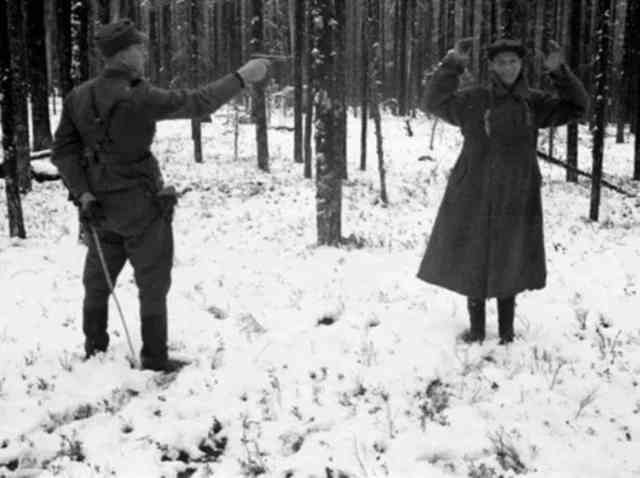

The spy knows that help is not coming for him as he stands in the thick of the woods, surrounded by his enemies. All too late, with a barrel of a gun pointed at his head, he laughs, knowing he is about to die for a cause that he believes in.
MGM’s First Lion
Even with both eyes closed inside a theater, any regular moviegoer can identify Leo the Lion’s roar as an MGM production commences. It is a roar we are all acquainted with that rings in our ears, harking back to the golden age of Hollywood.
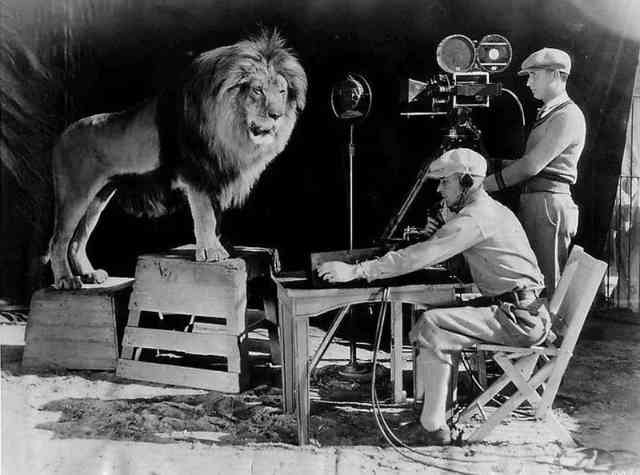
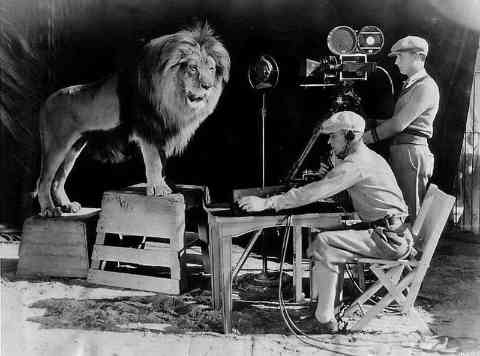
Here’s a rare, behind-the-scenes photograph of MGM’s first lion, Slat. Here the big cat is posing timidly. Unlike Leo, Slat was rather composed, silent as a domesticated cat. Being that Slat was an actor in the silent movie era, his roars weren’t heard anyway.
JFK and Party in Cape Canaveral’s Briefing Room
Here President John F. Kennedy is seen visiting Cape Canaveral Space Force Station. He is photographed listening to a discussion about his eagerly anticipated space program. To go to the moon, JFK said, is a mission Americans must accomplish within the decade. A race we must win (against the Russians).
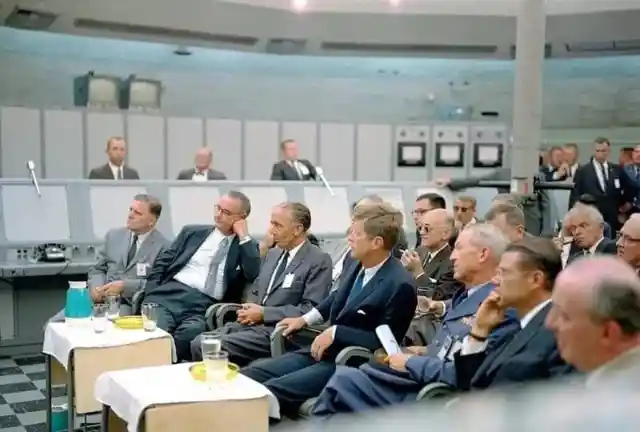
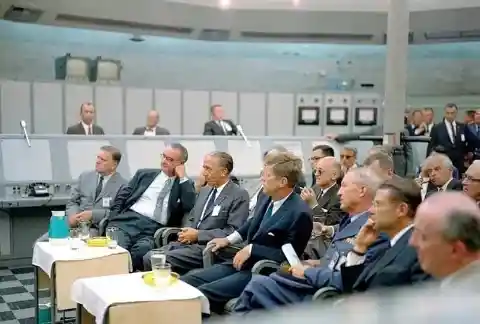
Following JFK’s death just days after his inspection of the rockets to be used in the Apollo Program, his successor, President Johnson, changed the name of Atlantic Missile Range (Station 1) to John F. Kennedy Space Center in his honor.
Nuclear Testing Site in Nevada
Even four years after the fact, the world still hadn’t yet processed the dual atomic bombings of Hiroshima and Nagasaki by the USAF, which killed approximately two hundred thousand people, when the Soviet Union decided to test an atomic bomb of their own. This effectively triggered the nuclear arms race between the two nations.
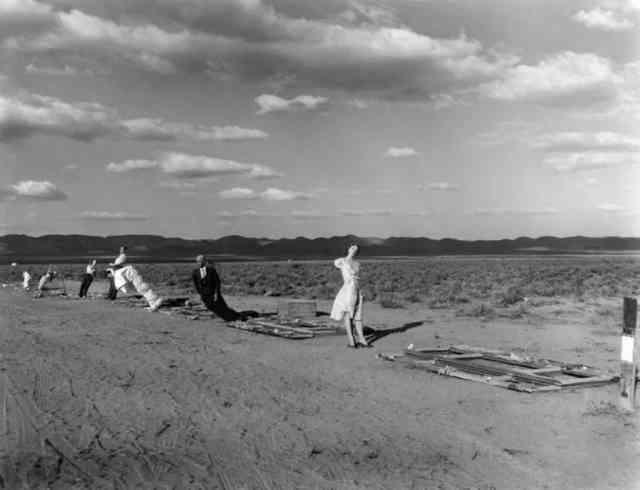
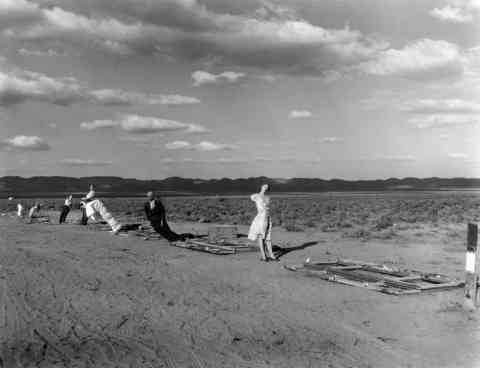
The Nevada Test Site was set up two years after the nuclear rivalry began. Test dummies are seen here lined up and evidently not faring well after the explosions, burned, maimed. More than a thousand nuclear bombs were tested here in the forty years that followed.
Leaving Saigon
Two years after military ground forces left Vietnam, it was only a matter of time before Saigon fell to the hands of the North Vietnamese. This rare picture seems to depict an American man punching a Vietnamese man as they both escaped the US embassy following the end of the conflict.
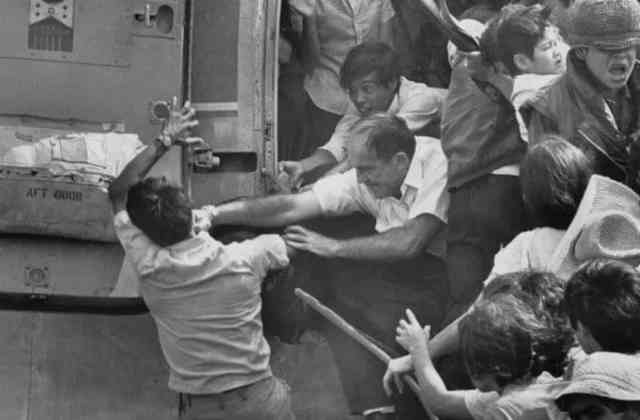
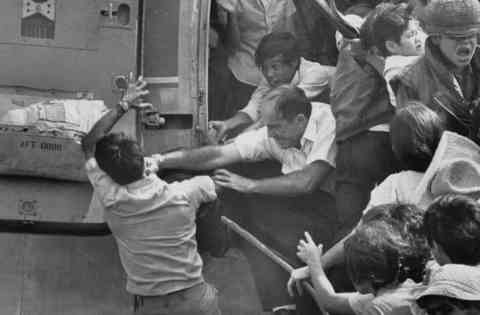
The chopper just couldn’t take them all, and it’s heartbreaking. This chopper reached its maximum capacity, and scarcity did what scarcity does. Not willing to just give up, this Vietnamese man presumably fell from a high place — his fate left in the hands of the Vietcong.
Before He Became a Public Enemy Number One
To those not in the know, this might look like a photograph of good friends on their way to the discotheque or a shopping spree. Pay close attention to the teen wearing a green sweater and blue flare pants, standing second to the last on the right side.
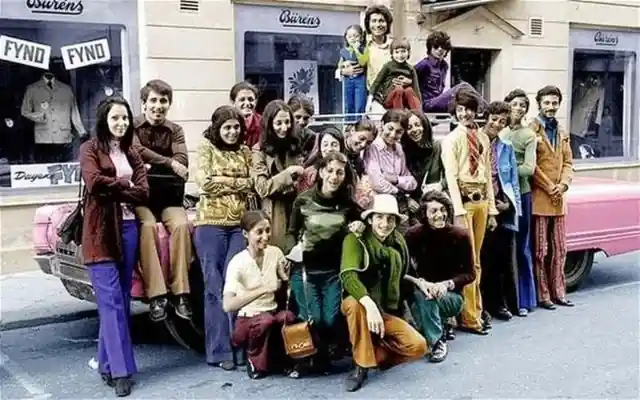
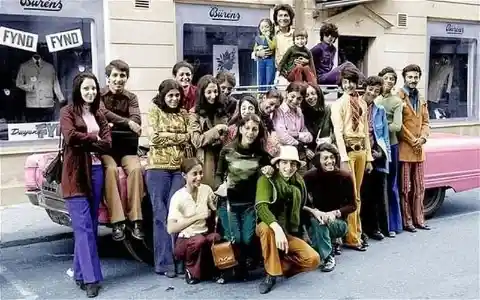
You’re looking at the terrorist leader of Al-Qaeda, Osama Bin Laden, before his militant days. It’s a picture of a simpler time—one that must have made him sick to the core while in hiding, moving from one cave to the next, to see himself dressed like the very people he vowed to eradicate, smiling back at him.
The Apple, India’s First Satellite
In 1981, a group of engineers and scientists plodded across an open field, led by a white bell cow. Whatever it was hauling was anyone’s guess. It was covered with a golden aluminum foil and looked to be an enormous barrel.
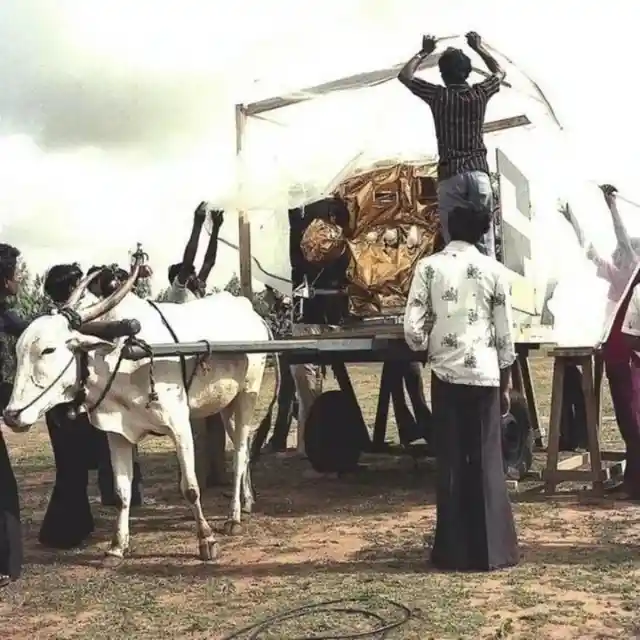
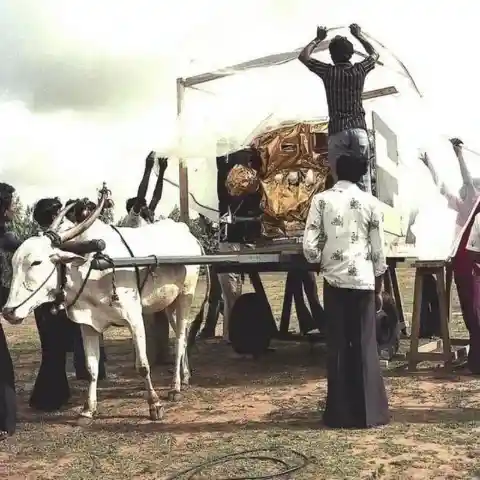
It may be hard to imagine its value now, especially with its humble appearance in this photo, but this was India’s first satellite that would be successfully launched up into space. It was used to carry TV signals and radio networks.
Body Armor Testing
In 1923, W.H. Murphy tested the durability of a newly designed lightweight bulletproof vest together with his associate at Washington City’s police HQ. The slimmer vest was easier to use and not readily detectable beneath a person’s clothing. It allowed police to be more versatile during shootouts or when in pursuit of a shooter.
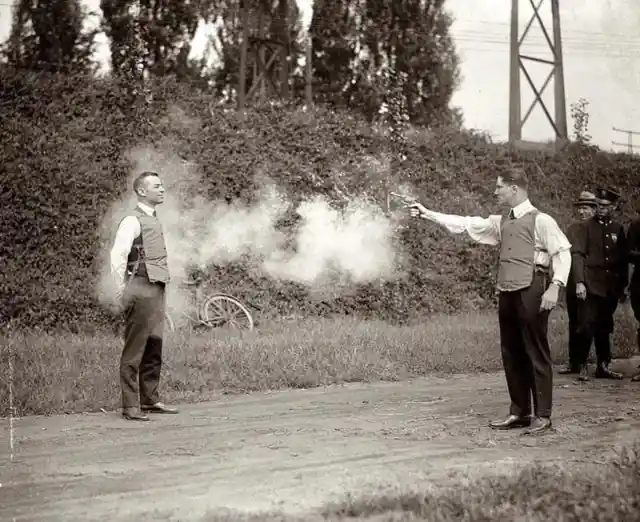
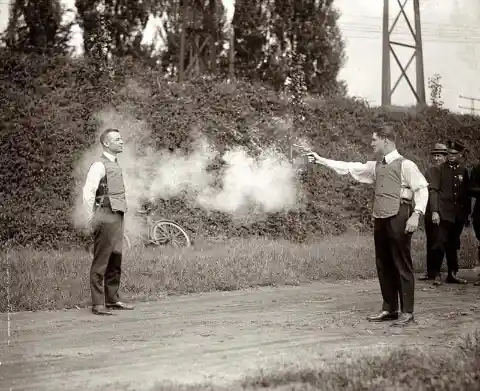
But the lighter materials used meant less cushioning, and the kinetic energy of each projectile could still cause broken bones, deep bruises, and ruptured capillaries. But at least the wearer would live to see another day.
Nuclear Testing in the Marshall Islands
Along the island’s shoreline are huts and cottages, and beyond it, a passenger boat appears to be heading out into the ocean, giving us the impression that they, along with all living creatures in and around the place, were annihilated by the nuclear explosion.
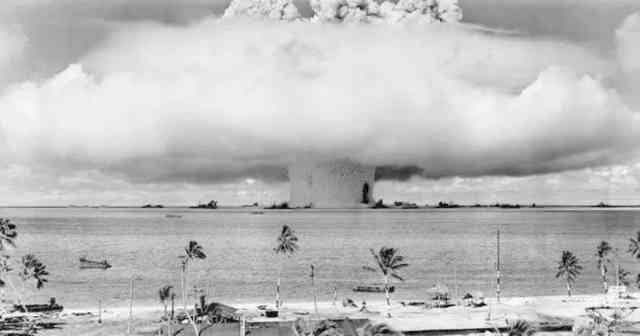
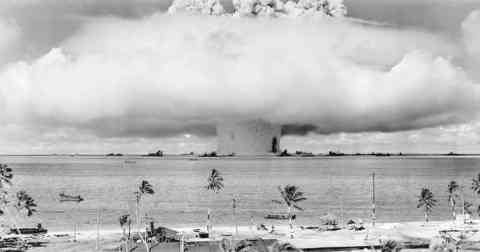
But the Bikini Atoll, along with the rest of the nearby Marshall Islands, were uninhabited, being used solely for a nuclear testing exercise codenamed “Operation: Crossroads.” Scenic views like this and many more in the area bore the brunt of 23 nuclear tests from 1946 to 1958.
The Development Phase of “The Gadget”
The discovery that Uranium could be split in half when exposed to radiation led to the creation of the first atomic bomb. A group of US scientists comprised the Manhattan Project, with the help of their UK and Canadian counterparts, built the world’s first atomic bomb, called The Gadget.
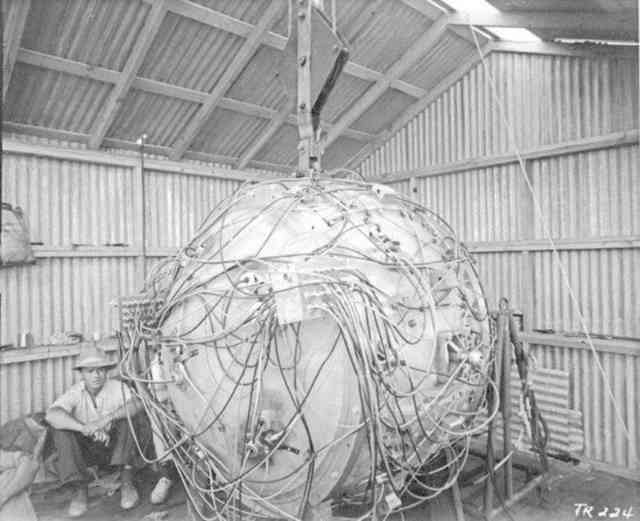
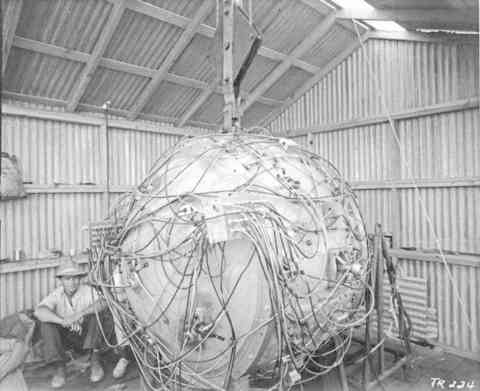
It was raised above a tower upon testing at the Trinity Base Camp so its efficacy, when dropped from a plane, could be evaluated—as opposed to firing it as a weapon as they had initially planned.
Military Campaign Around Japan’s Islands
The Allied forces saw Kobe as one of Japan’s weak points. Despite being only behind Kawasaki City in size, its military defense was relatively soft. Its vulnerability was exacerbated by the many wooden houses around the area, which the Americans took advantage of by dropping incendiary bombs that caused enormous blazes.
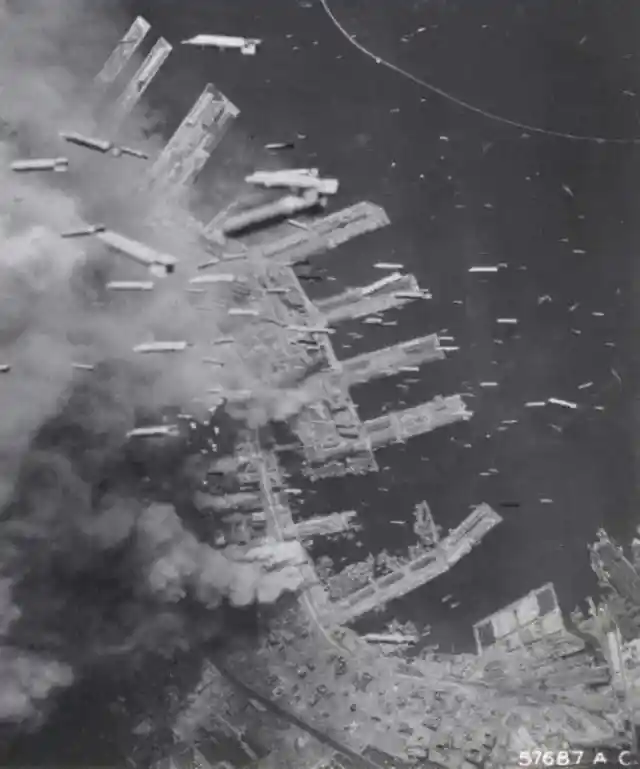
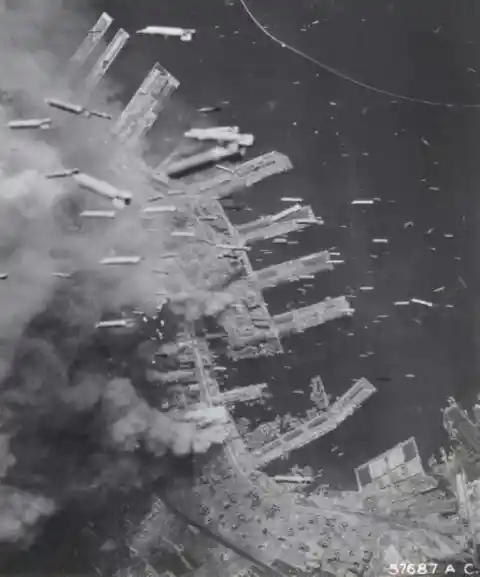
Kobe was also hard to defend because it had a large population of about a million. Many of them would not escape the thousands of bombs dropped by B-29 Superfortresses as depicted in this photograph. These bombs destroyed its largest port and crippled its strategic assets.
Dropping of Fat Man in Nagasaki
This aerial view makes for a good visual comparison of Nagasaki City before and after the atomic bomb was dropped. The Fat Man nuclear weapon, also produced by the Manhattan Project, was even stronger than the Little Boy version detonated in Hiroshima three days prior and claimed approximately 70,000 lives.
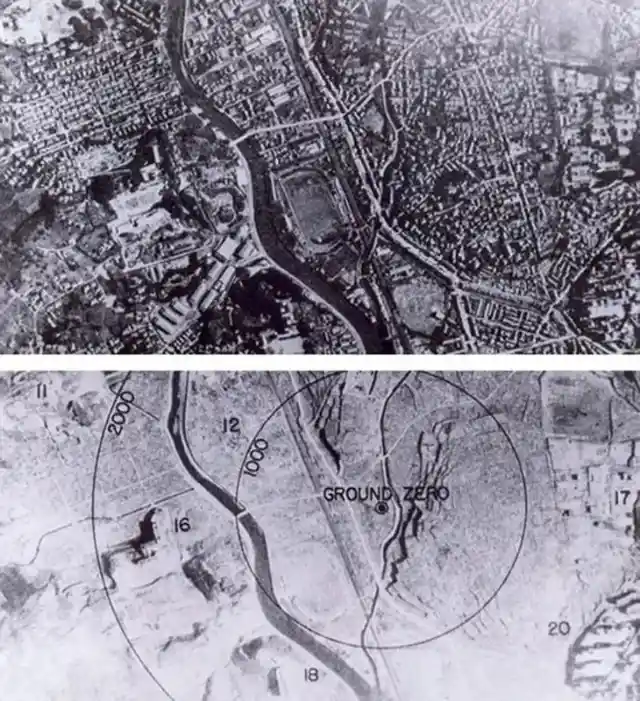
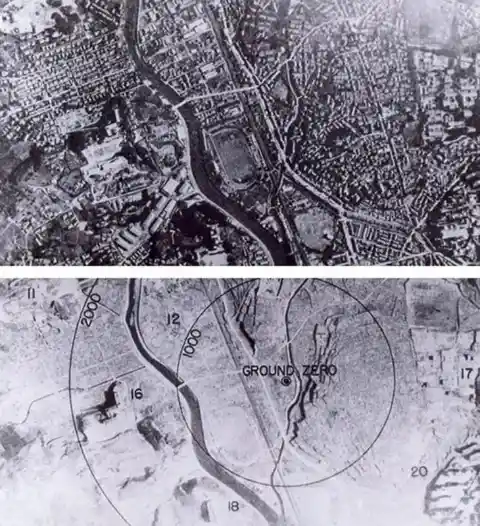
Targeting Nagasaki was a vital tactical decision by the US military and the Allied forces. The city contained many industries that manufactured military equipment: firearms, ships, and other products, which boosted Japan’s ability to fight back during the war. Taking it down was crucial. Prior to the nuclear attack, it had already been bombed with conventional explosives five times.
Raids During the Prohibition Period
Even before the Prohibition Act was established in 1919, most states had already been dry. The idea behind prohibition was to eliminate what they then considered to be the root problem of society’s ills. History, however, shows us that addiction is often a symptom of a larger issue. They hoped that by keeping citizens away from the vice of drinking, public health and order would be improved.
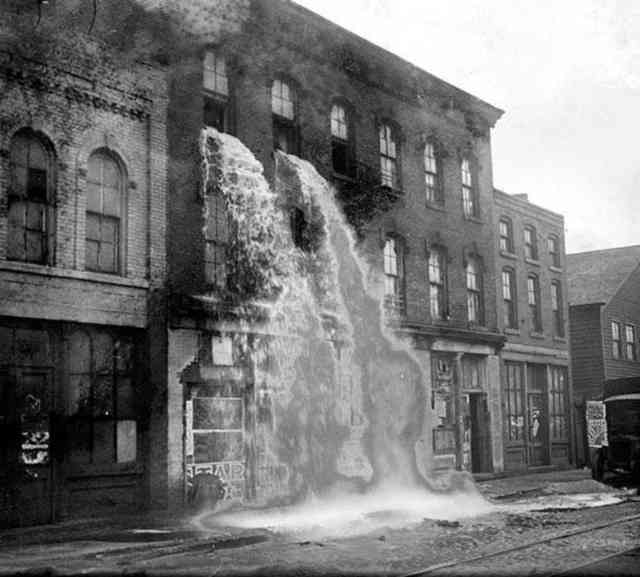
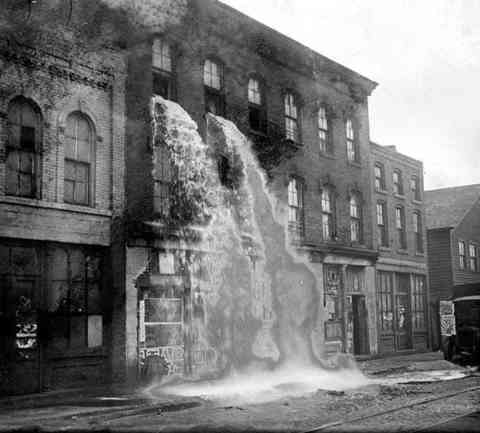
But it didn’t take long for bootleggers to take over. Speakeasies illicitly rose in dark corners, and the mob strengthened its grips on its operations. Violence and alcohol-related crimes worsened. The law was eventually repealed in 1933.
Children Wearing Gas Masks in Liverpool During WWII
Students in Liverpool went to school looking tubbier with protective clothing. Their cute faces were hidden behind uniformed masks with round eyes and long equine muzzles. They did this to prepare themselves against the looming threat of poison gas attacks during WWII by the Germans.
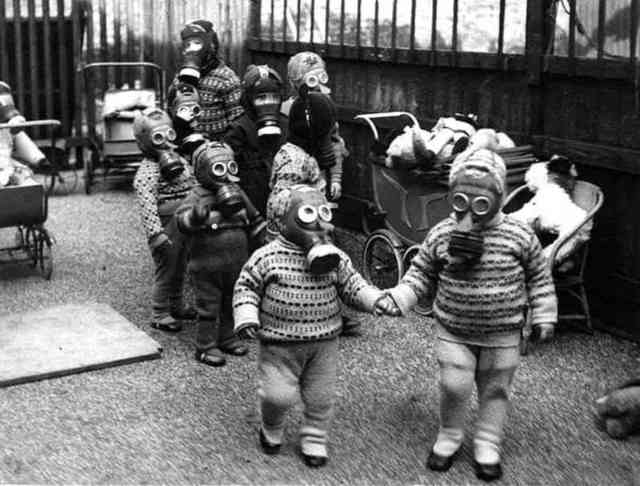
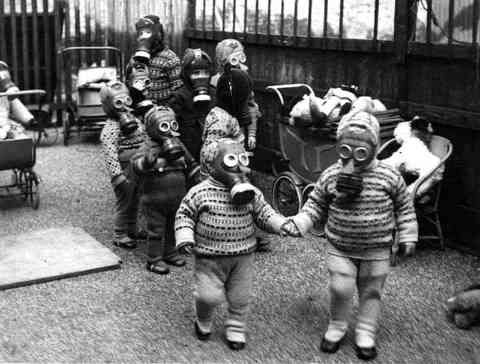
Many of these students didn’t make it to the next grade. The German Luftwaffe bombed European cities indiscriminately, killing as many civilians as military targets. This photo is a reminder that the evils of war should not be forgotten.
Nazi Rallies and Propaganda
The Nazis were able to establish themselves as a formidable force during WWII by putting so much effort into developing weapons of war—from more sophisticated aircrafts and seemingly impenetrable tanks to ships and submarines that dominated the oceans.
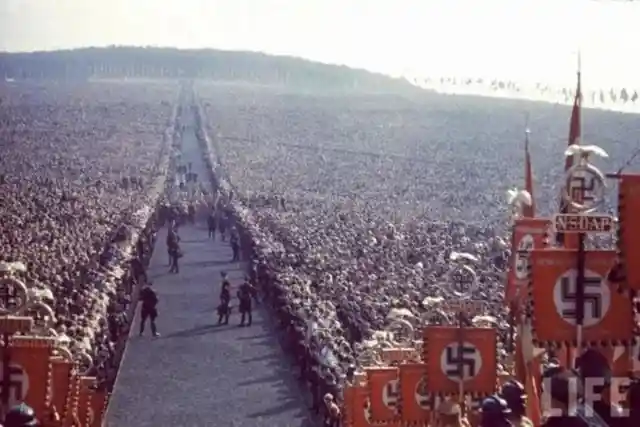
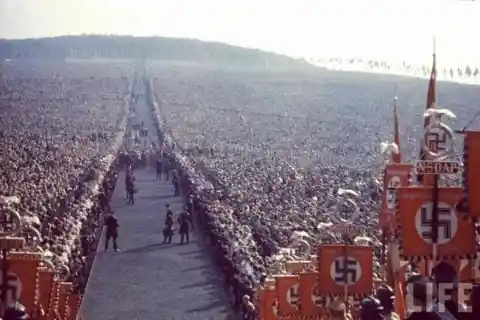
But what made them a difficult foe was the aura of invincibility they projected through regular political rallies. Events held in honor of the fuhrer united of the masses were televised in an attempt to demonstrate their superiority and instill fear in their enemies' minds.
Quad Roller Skates and Disco in the 1970s
Patented in the mid-1800s, the idea of commuting in roller skates became popular in the 1930s. People went around places gliding, not with the inline design that’s virtually an ice skate except in wheels, but in better-cushioned quad rollers that were easier to use.
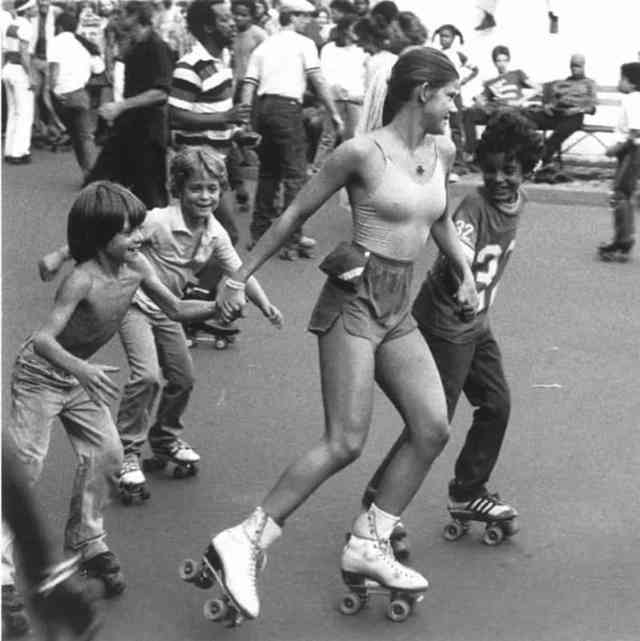
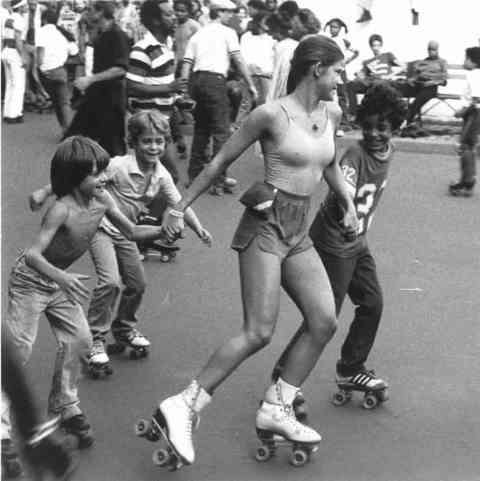
Riders just shifted their weight to navigate the streets. They became even more popular when people fused roller skating with the disco. Dancers rode their rollers fueled by modern upbeat music and danced and skated around in clubs worldwide.
Abolishment of Slavery in the 19th Century
After 246 years of atrocious treatment and human trafficking, the legal transportation of enslaved people from Africa to America and many parts of the world was outlawed. Millions of people were sold and forced to work all day on their owner’s farms.
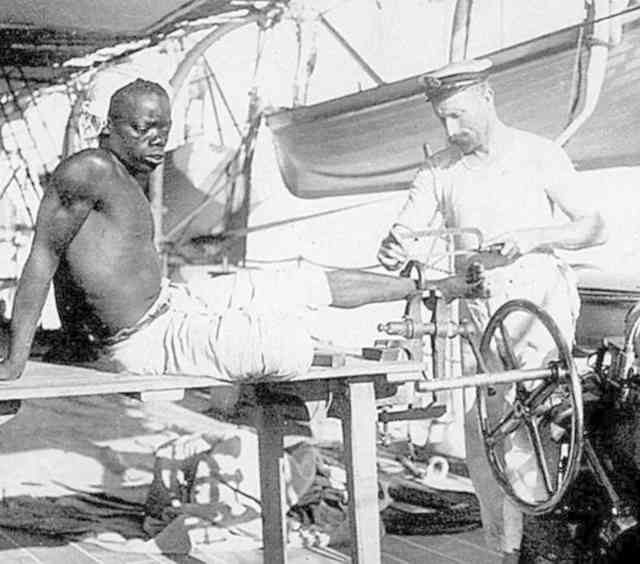

They were whipped, imprisoned, and mutilated until the 13th Amendment to the US Constitution legally ended this nefarious practice. In this photo, a British blacksmith saws off an enslaved person’s shackles on board a ship, after which he was free to go wherever he wanted. However, the news about slavery’s abolition didn’t reach everyone as quickly as lawmakers had hoped.
Meet Buster, the Roller-Skating Rooster
Videos quickly go viral online nowadays: pets caught performing unusual stunts, fat cats learning to jump through flaming hoops, dogs doing the commando crawl on an imaginary battlefield, or parrots mimicking other animals. Back in the 50s, they had the one-of-a-kind roller-skating rooster.
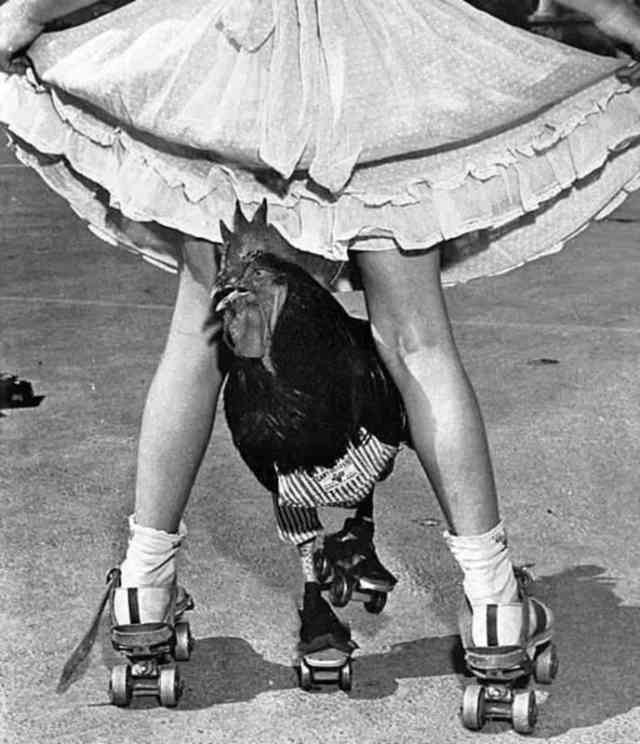
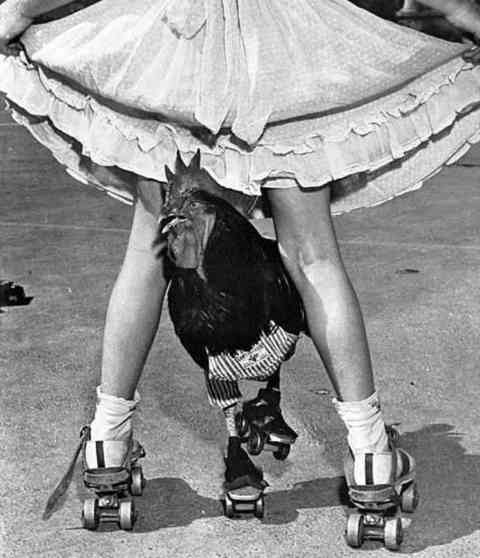
Buster was discovered when journalist Leigh Wiener met Buster’s owner Billy Lehr while covering a minor road accident. Lehr had been training his rooster to skate for almost a year. He invited the journalist to one of its performances. Buster did more than a few tricks both on roller skates and ice skates, including gliding in between the legs of another performer.
Muhammad Ali Trains at the Bottom of A Pool
Sports photographer Flip Schulke walked in at Miami’s Sir John Hotel and found a young Cassius Clay working out in the pool. This was way back in 1961, the same year Clay fought eight times and ended the year without a single loss.
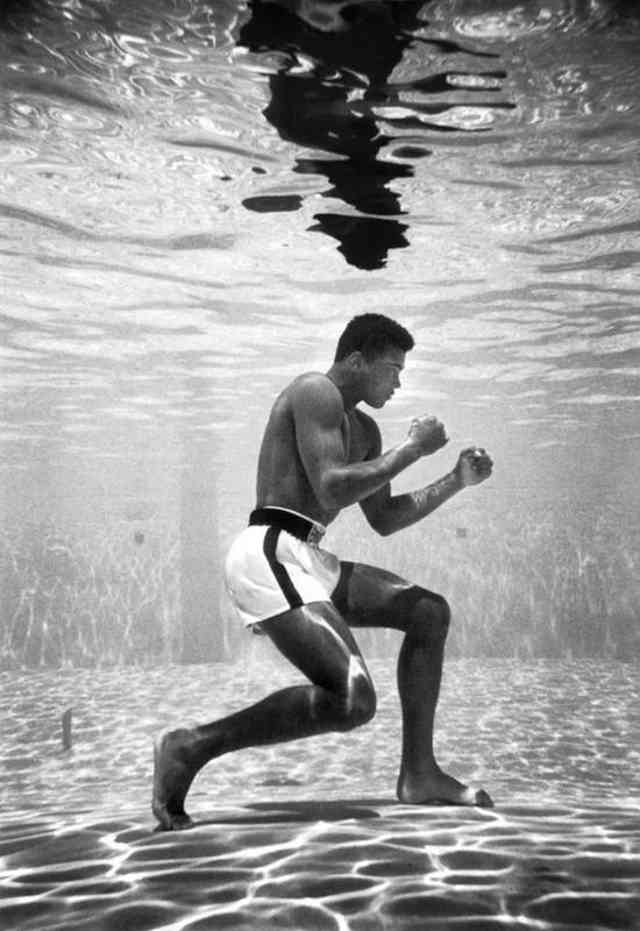
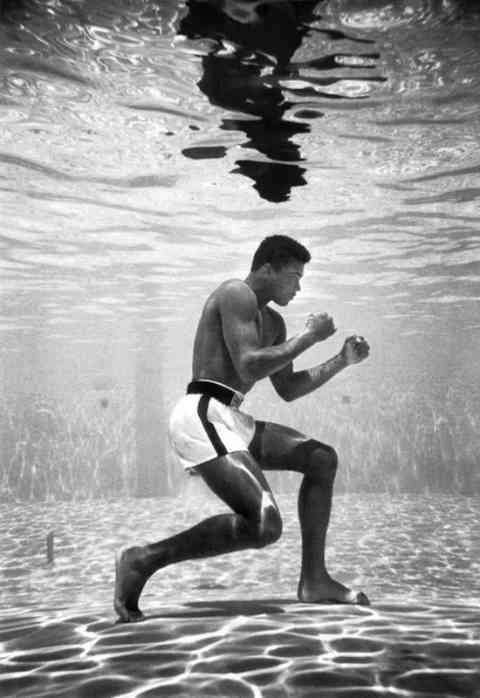
Clay, who later changed his name to Muhammad Ali, explained to the photographer that training at the bottom of the pool was part of his regimen. He likened it to lifting weights due to the resistance of water on his movements and punches. This must be one of his best training pictures ever.
Capital Punishment, Last Public Hanging in America
Citizens of modern society may or may not find it hard to believe that public hangings were practiced for a long time in America. The last one carried out was in 1936, when Rainey Bethea pled guilty to raping an elderly woman and later stealing her jewelry. He was sentenced to death 18 days after his conviction.
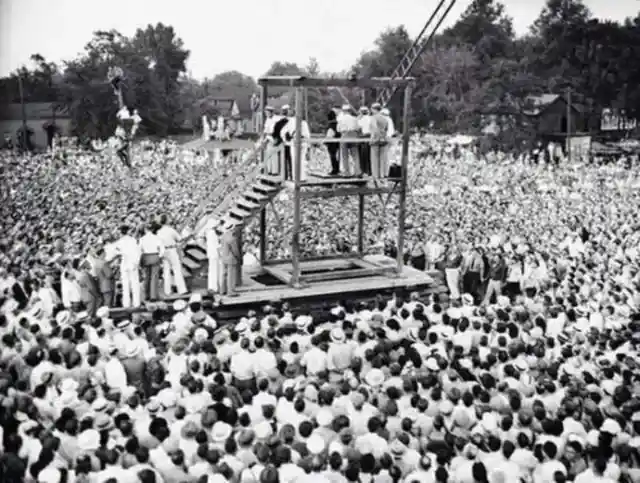
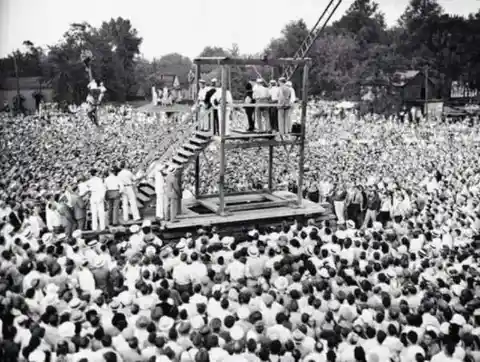
Bethea’s executioner, Arthur L. Hash, showed up inebriated. He only acted after a second order was shouted to pull open the trap door, with a jeering and booing audience. Public hanging as a method of execution was deemed inhumane in 1868.
How Felines React to Zero Gravity
Scientists wanted to know how a zero-gravity environment would affect a human being and decided, for some reason, to pick a cat to experiment on. USAF Capt. Druey P. Parks was photographed here with the animal tossed up inside the cockpit of Lockheed’s F-94 Starfire.
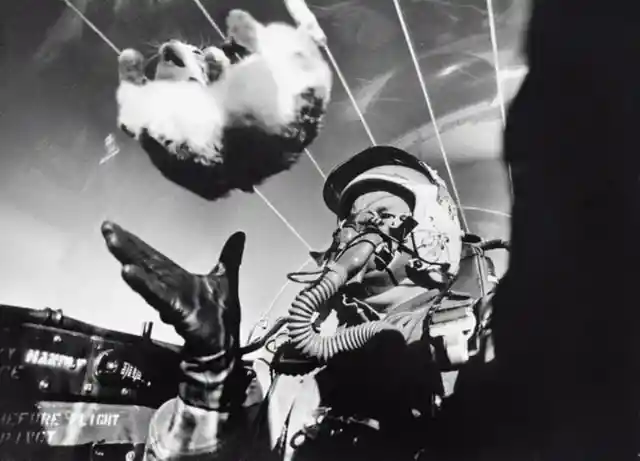
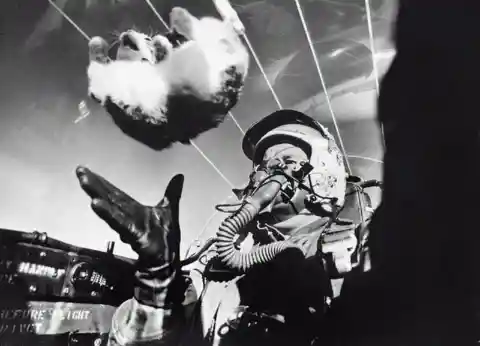
The pilot described the feline, upon entering 25,000 feet at reduced gravity, as being bewildered. It struggled to reposition itself in the air, attempting to do what cats always do: to land on their feet.
Wires Connected to the Old Stockholm Telephone Tower
In the early years of telephone service technology, every wire that led to an office or residence in Stockholm was literally connected to one huge tower. Amidst the metropolis, it stood more than two hundred feet high, with more than 5,500 wires bound to the structure.
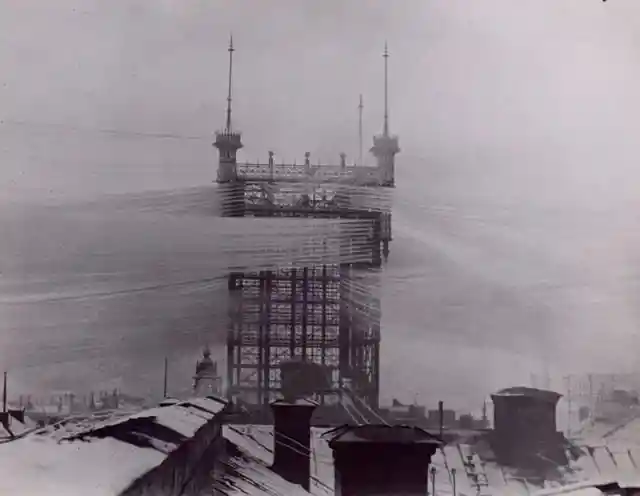
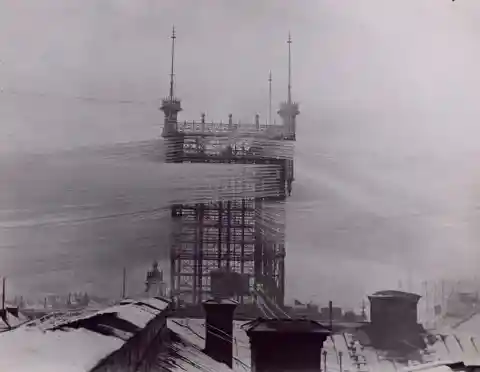
This made the telephone industry a weighty business. It obstructed the view of the sky, especially for those who lived close to the site. It was eventually deemed hazardous, being susceptible to bad weather. Soon, underground cables were laid, rendering the tower obsolete.
The Nazis’ Supersized Railway Gun
Adolf Hitler was photographed here examining the Nazi’s mighty weapon of the Second World War, the Gustav railway gun, which was as tall as a building and the heaviest piece of artillery ever made. It was purposely built to crush French fortifications on the Maginot Line.
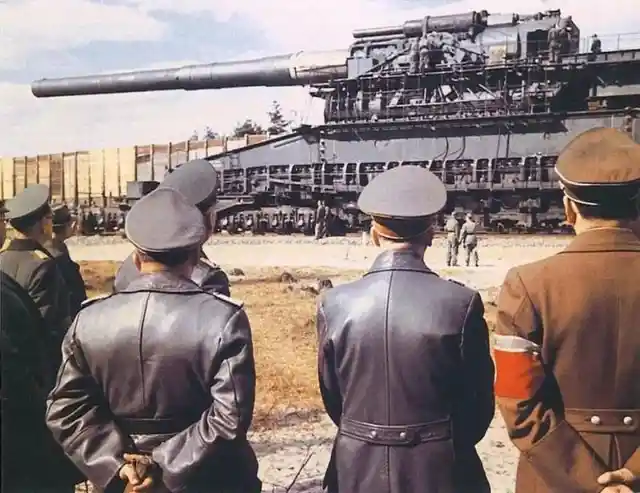
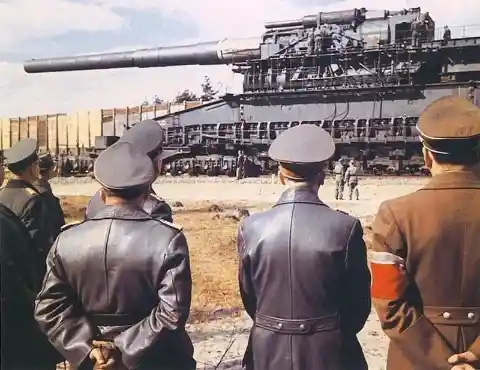
The railway gun, however, didn’t quite meet expectations and was only used for a limited time during the war. It was also unfinished during the Battle of France, for which it was originally intended. The Germans deliberately dismantled the weapon to prevent it from falling into enemy hands.